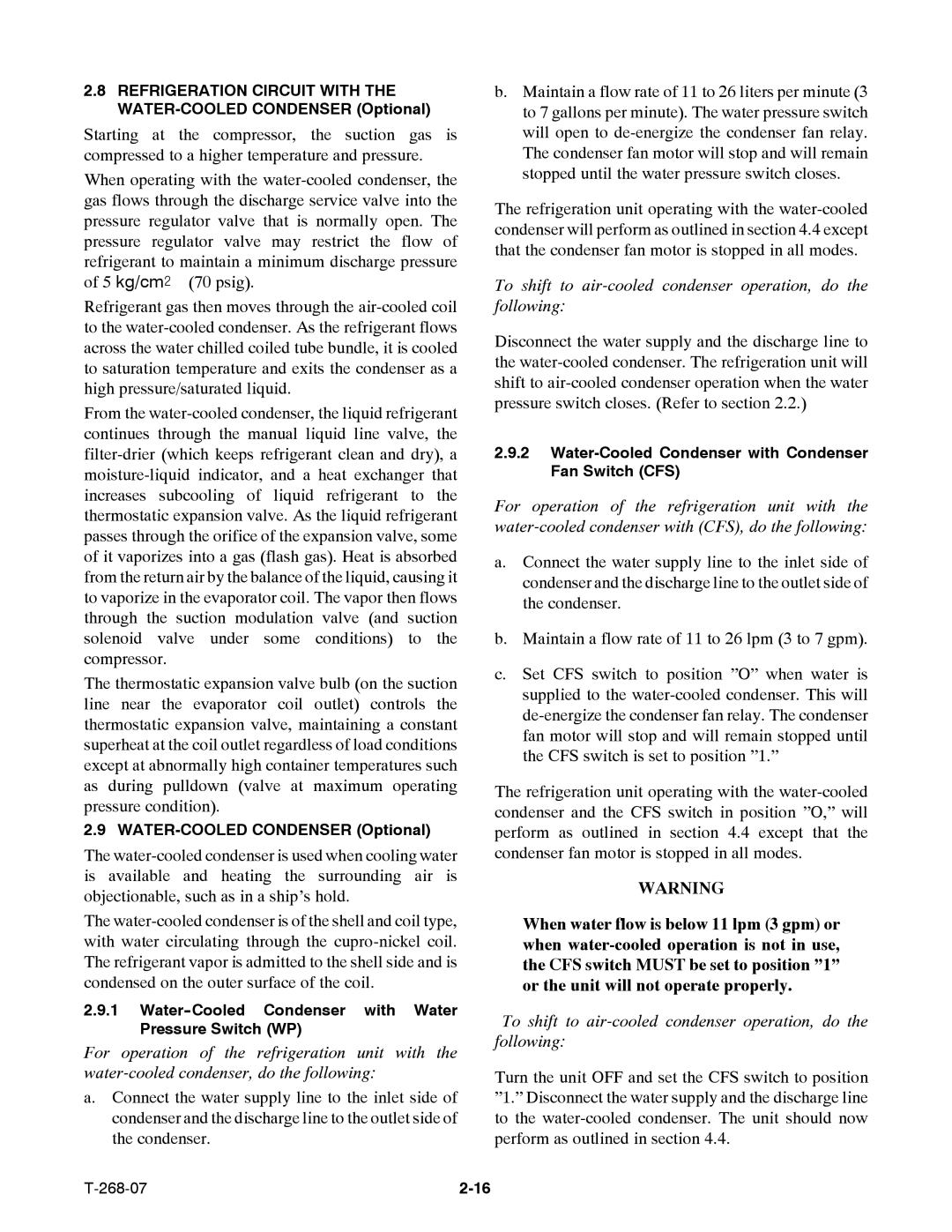2.8REFRIGERATION CIRCUIT WITH THE
Starting at the compressor, the suction gas is compressed to a higher temperature and pressure.
When operating with the
Refrigerant gas then moves through the
From the
The thermostatic expansion valve bulb (on the suction line near the evaporator coil outlet) controls the thermostatic expansion valve, maintaining a constant superheat at the coil outlet regardless of load conditions except at abnormally high container temperatures such as during pulldown (valve at maximum operating pressure condition).
2.9 WATER-COOLED CONDENSER (Optional)
The
The
2.9.1Water--Cooled Condenser with Water Pressure Switch (WP)
For operation of the refrigeration unit with the
a.Connect the water supply line to the inlet side of condenser and the discharge line to the outlet side of the condenser.
b.Maintain a flow rate of 11 to 26 liters per minute (3 to 7 gallons per minute). The water pressure switch will open to
The refrigeration unit operating with the
To shift to
Disconnect the water supply and the discharge line to the
2.9.2Water-Cooled Condenser with Condenser Fan Switch (CFS)
For operation of the refrigeration unit with the
a.Connect the water supply line to the inlet side of condenser and the discharge line to the outlet side of the condenser.
b.Maintain a flow rate of 11 to 26 lpm (3 to 7 gpm).
c.Set CFS switch to position ”O” when water is supplied to the
The refrigeration unit operating with the
WARNING
When water flow is below 11 lpm (3 gpm) or when
To shift to
Turn the unit OFF and set the CFS switch to position ”1.” Disconnect the water supply and the discharge line to the
